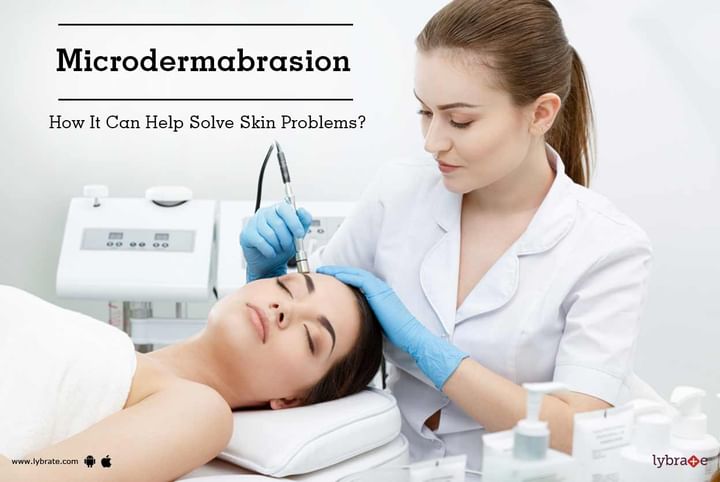Microdermabrasion - How It Can Help Solve Skin Problems?
Microdermabrasion is a quick and painless treatment that accelerates the rate at which dead skin is exfoliated, and jump-starts the proliferation of new skin cells. Your dermatologist may recommend a series of microdermabrasion treatments, which can treat hyperpigmentation, sun-damaged spots, dryness, fine lines and wrinkles and even minor acne scars. Microdermabrasion can be coupled with just about any other type of skin treatment and is usually recommended to be done every few weeks to every two or three months.
Suitable for all but the most sensitive skins, microdermabrasion combines vacuum suction with tiny abrasive crystals to polish away the uppermost layer of skin, eliminating roughness as well as fine lines and wrinkles. It is a quick and virtually pain-free procedure that uses tiny, rough aluminum crystals to vigorously exfoliate the top layer of the skin, removing dead skin cells.
How is a microdermabrasion procedure performed?
Most often, your microdermabrasion treatment will be performed by a licensed skincare professional in your plastic surgeon's office or medical spa.
There are two general methods for microdermabrasion:
Crystal Microdermabrasion: For this type of microdermabrasion, a handpiece emits crystals onto the surface of the skin, resulting in a gentle abrasion or "polishing" process. Then the dead skin cells along with the crystals are suctioned off either instantaneously (in the same handpiece) or in a secondary process.
Diamond-Tip Microdermabrasion: This type of microdermabrasion works with a diamond-tip handpiece that gently abrades and exfoliates dead skin cells. Like the crystal microdermabrasion, the dead skin is either suctioned off right away in the same handpiece or in a secondary process. The diamond-tip microdermabrasion is safer to perform closer to the eyes and has more flexibility in sensitive areas or on more sensitive skin.?
Ideal Candidates:
Microdermabrasion works best for anyone looking to revitalize their skin. If you have any of these conditions, you are a candidate for microdermabrasion:
- Fine lines and wrinkles
- Hyperpigmentation or sun spots
- Dry skin
- Minor acne scars
- Blemishes or large pores
Acne:
Acne is a skin condition that leads to the outbreak of pimples and sores as well as whiteheads and blackheads. These have a reddish appearance and make the skin look less than ideal. With the help of microdermabrasion, one can gradually reduce the appearance of light scarring and make the skin look even toned.
This is an inflammation-based skin condition which leads to the appearance of prominent blood vessels as well as other kinds of skin eruptions. Microdermabrasion can come to the rescue of the patient who is suffering from severe symptoms of this condition.
When to Avoid Microdermabrasion:
This procedure should be avoided by people who have sustained deep scars. Also, anyone who has active keloids and lesions that are yet to be diagnosed should avoid this treatment as it may lead to an aggravation. Further, anyone who is suffering from an immune system disorder or diabetes should also avoid this kind of treatment as it may lead to complications. If you have had a chemical peel recently, you should also steer clear of this kind of treatment as it may lead to inflammation, swelling and bleeding on the skin which is already tender from the previous treatment.



+1.svg)
